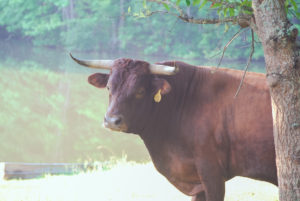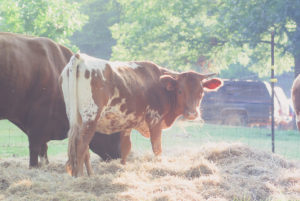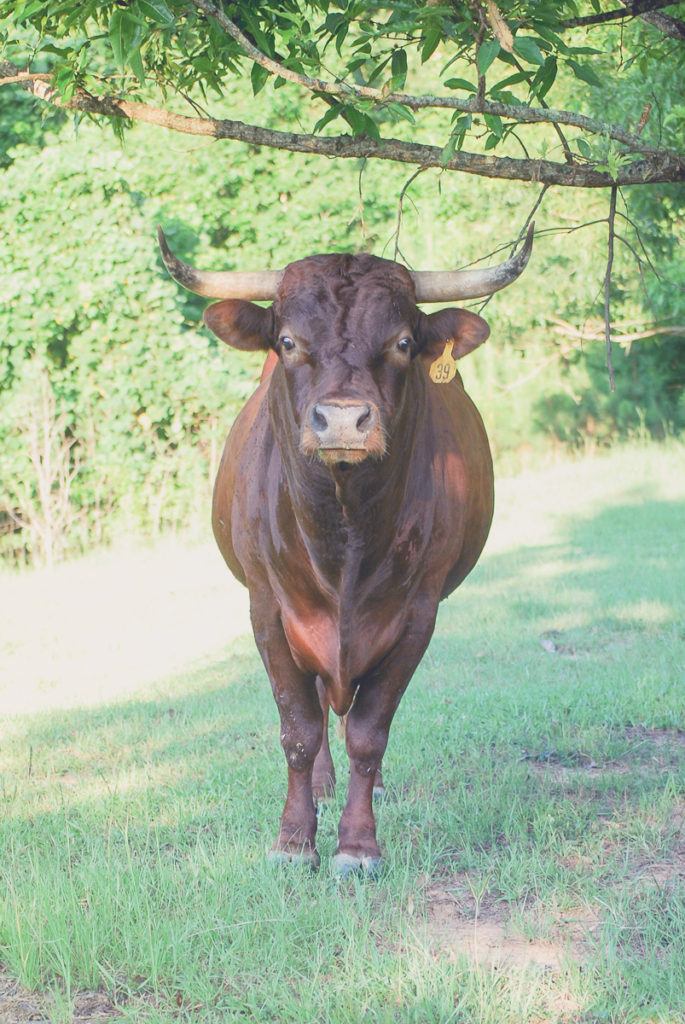Pineywoods Cattle
WATCH:
The Holstein Dilemma
Pineywoods cattle are America’s original landrace cattle courtesy of the Spaniards who brought them to coastal Florida and Georgia in the 1500’s. From here little detail is known other than given their situation, the ones that survived adapted to their new surroundings and over time became an example of survival of the fittest.
It is from the core of these original survivors that the many family strains were developed without the modern day calculations and formulas we have today. Simply put the strains developed under the scrutiny of their regional conditions and the needs of their owners. The needs were seldom single purpose, namely meat, milk and muscle. Those that’s primary use was for muscle (oxen) most often preferred a larger animal while those whose primary use for meat and or dairy had an eye on different characteristics. This diversity in needs and regional conditions including survivability under free range conditions gave pineywoods a genetic diversity that has to my knowledge not been replicated in any other breed other than the Longhorns that developed under similar situations under different regional conditions.
Today and predominantly since the Industrial revolution cattle have been bred for single characteristics and to thrive under only near pristine conditions. If you have ever raised livestock you know conditions very rarely stay pristine. This is where Pineywoods cattle shine. They make the most out of the conditions they have. Now before you run to fence in a woodlot to get these Pineywoods thinking you won’t have to take care of them, stop! Any time you put a fence around any animal you take on the responsibility to see to their needs. Pineywoods, tough and hardy as they are cannot thrive if fenced in and neglected. What does that mean? Most of the literature on Pineywoods focuses on the historical aspects of how they were under free range conditions. Mississippi was the last state to end free ranging cattle in 1968. Since that time Pineywoods have been fenced in meaning they are more dependent on their owner for their needs. Under free range conditions Pineywoods much like the American Buffalo (Bison) simply moved away from areas that had been overgrazed to greener pastures having access to tens of thousands of acres. If they had a mineral need they searched until they found it, same for water.They were the original rotational grazers. Along the way they adapted to browsing and today they commonly browse privet hedge, sweetgum and other undesirables. Once fenced in parasites become more of a problem due to close quarters and the inability to move away and leave the eggs which in free range conditions would help break the cycle. Bottom line they ain’t maintenance free.
Pineywoods are considered 3/4 of a grazing unit being of smaller size than modern breeds meaning more can be grazed on the same amount of acreage as modern breeds. This coupled with their lower maintenance requirements, easy calving and long lived make Pineywoods a good choice for beginning farmers and those seeking a multi purpose breed and unique situations such as starting or operating under silvopasture conditions.
If you would like to visit or have questions about Pineywoods I’d be happy to talk with you. The Pineywoods Cattle Foundation website https://pineywoodscattle.us is an excellent resource for learning more about Pineywoods and meeting breeders in your area.


